Shift-Work Mental Health Risk Calculator
Assess Your Risk
This tool evaluates your risk of anxiety and depression based on your shift work patterns and lifestyle factors. Click 'Calculate Risk' to see your results.
Ever wonder why nights at the office leave you feeling on edge or downcast? The culprit is often shift work disorder, a condition that messes with your internal clock and can set the stage for anxiety and depression. Below you’ll find a straight‑to‑the‑point guide that explains what’s happening inside, why mental health suffers, and what you can do about it.
Key Takeaways
- Shift‑work disorder disrupts circadian rhythms, leading to hormonal imbalances.
- Both anxiety and depression share biological pathways with the sleep disturbances caused by irregular work hours.
- Risk spikes for night‑shifters, rotating‑shift workers, and anyone who regularly opposes natural daylight.
- Simple changes in light exposure, sleep hygiene, and timing of meals can dramatically lower risk.
- Professional help is essential when anxiety or depressive symptoms persist beyond a few weeks.
Let’s break down the science, the symptoms, and the solutions.
What Is Shift‑Work Disorder?
Shift‑Work Disorder is a sleep‑wake condition that occurs when a person’s work schedule conflicts with the body’s natural circadian rhythm, causing chronic insomnia and excessive sleepiness. The American Academy of Sleep Medicine lists two core criteria: difficulty falling asleep or staying asleep during the intended sleep window, and daytime sleepiness that interferes with functioning. Typical signs include:
- Insomnia during daytime sleep attempts.
- Uncontrollable fatigue during work hours.
- Reduced alertness and slower reaction times.
While the disorder itself is classified as a sleep‑related medical condition, the ripple effects on mood and cognition are profound.
How the Body Clock Works
Circadian Rhythm is a roughly 24‑hour cycle driven by a master clock in the hypothalamus that coordinates hormone release, body temperature, and alertness. Light is the primary cue. When eyes detect morning light, the suprachiasmatic nucleus (SCN) sends signals to lower melatonin, the sleep hormone, and raise cortisol, which boosts wakefulness. In darkness, melatonin rises, preparing the body for sleep.
Shift work throws this loop into chaos. Night‑shifters experience bright artificial light when melatonin should be high, while daylight exposure during the day suppresses the hormone when the body is trying to rest.
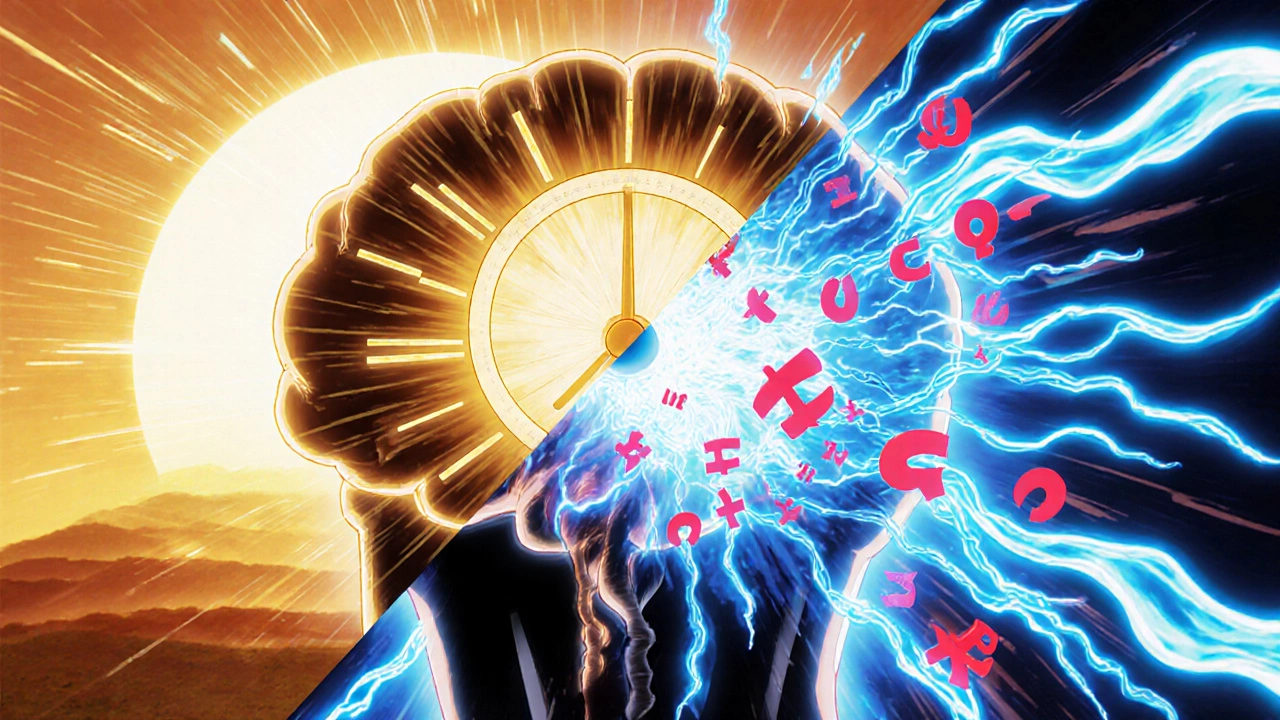
Link Between Shift‑Work and Anxiety
Research from the National Institute of Health (2023) shows that night‑shift nurses have a 30% higher prevalence of generalized anxiety disorder compared to day‑shift peers. Two biological mechanisms drive this link:
- Hormonal flux: Disrupted cortisol rhythms lead to heightened stress reactivity. Normally, cortisol peaks in the morning and tapers off by evening. Shift work blunts this pattern, keeping cortisol elevated overnight and making the nervous system “on‑edge.”
- Neurotransmitter imbalance: Inconsistent sleep reduces the brain’s production of gamma‑aminobutyric acid (GABA), the main inhibitory neurotransmitter that calms anxiety.
Beyond biology, the psychosocial strain of odd hours-social isolation, missed family events, and reduced access to support networks-adds a layer of chronic worry, feeding the anxiety loop.
Link Between Shift‑Work and Depression
Depression is a mood disorder characterized by persistent sadness, loss of interest, and a range of physical symptoms like changes in appetite and sleep. Several studies (e.g., a 2022 longitudinal cohort of 5,000 factory workers) found that those with shift‑work disorder were twice as likely to develop major depressive episodes over five years.
Key pathways include:
- Serotonin disruption: Light exposure influences serotonin synthesis. Inadequate daylight reduces serotonin, a neurotransmitter tied to mood regulation.
- Inflammatory response: Sleep loss raises pro‑inflammatory cytokines (IL‑6, TNF‑α). Chronic inflammation is a well‑documented risk factor for depression.
Behaviorally, the mismatch between work hours and societal rhythms often leads to erratic eating patterns and reduced physical activity-both of which exacerbate depressive symptoms.
Risk Factors & Who’s Most Vulnerable
Not every night‑owl ends up with anxiety or depression. The following factors increase susceptibility:
- Age: Younger adults (20‑35) adapt less well to rotating shifts.
- Genetics: Polymorphisms in the PER3 gene affect circadian resilience.
- Chronotype: Natural “larks” (morning types) struggle more with night work than “owls.”
- Lifestyle: Excessive caffeine, alcohol, or nicotine use worsens sleep fragmentation.
- Work environment: Low lighting, high noise, and unpredictable schedules amplify stress.
Understanding your personal risk profile helps tailor prevention strategies.

Practical Strategies to Mitigate Risks
The good news: you can re‑engineer your environment and habits to protect mental health.
- Control Light Exposure:
- Use bright, blue‑enriched lamps during night shifts to boost alertness.
- Wear orange‑tinted glasses on the way home to block blue light and promote melatonin production.
- Sleep in a completely dark room-blackout curtains, eye masks, and no screens for at least 30minutes before bed.
- Optimize Sleep Hygiene:
- Keep a consistent sleep window, even on days off.
- Reserve the bedroom for sleep only-no work laptops or TVs.
- Maintain a cool (≈18°C) environment; lower body temperature signals readiness for sleep.
- Schedule Strategic Naps: A 20‑minute power nap before a night shift can reduce sleepiness without causing grogginess.
- Mind Your Diet:
- Eat a light, protein‑rich snack (e.g., Greek yogurt) before the shift to stabilize blood sugar.
- Avoid heavy meals and caffeine after the first half of the shift.
- Stay Physically Active: A brisk 15‑minute walk during a break boosts circulation and counters the sedentary nature of many shift jobs.
- Seek Social Connection: Schedule regular video calls or weekend activities with friends to counter isolation.
When these tactics are combined, many workers report a measurable drop in anxiety scores (average reduction of 4 points on the GAD‑7 scale) after six weeks.
When to Seek Professional Help
If you notice any of the following, it’s time to talk to a clinician:
- Persistent feelings of dread or hopelessness lasting more than two weeks.
- Inability to function at work despite using sleep‑hygiene tricks.
- Suicidal thoughts or self‑harm urges.
- Severe insomnia (sleep < 4hours/night) that doesn’t improve with environmental changes.
Options include cognitive‑behavioral therapy for insomnia (CBT‑I), pharmacologic aids like melatonin or short‑acting hypnotics, and counseling for anxiety or depression. Occupational health services can also negotiate shift rotations that better align with your chronotype.
Frequently Asked Questions
Can occasional night shifts cause anxiety?
Yes. Even a few irregular night shifts can disturb melatonin release, leading to short‑term anxiety spikes. Consistency is key; if you know you’ll be on a night schedule, plan light exposure and sleep windows in advance.
Is melatonin supplementation safe for shift workers?
Melatonin is generally safe at low doses (0.5‑3mg) taken 30‑60 minutes before desired sleep time. It helps re‑set the circadian clock but should be combined with proper darkness and sleep hygiene for best results.
What’s the difference between shift‑work disorder and regular insomnia?
Regular insomnia isn’t tied to a work schedule and can occur any time of day. Shift‑work disorder specifically arises when the timing of sleep conflicts with non‑standard work hours, and it often improves when the schedule changes.
Can diet affect my mood while working nights?
Absolutely. High‑sugar foods cause spikes and crashes that mimic anxiety. Opt for complex carbs, lean proteins, and healthy fats to stabilize blood glucose and support neurotransmitter production.
Are there workplace policies that help reduce shift‑work‑related mental health issues?
Progressive employers offer forward‑rotating shift patterns, mandatory rest periods, and access to on‑site lighting solutions. Asking HR about a “chronotype‑friendly” schedule can be a good first step.

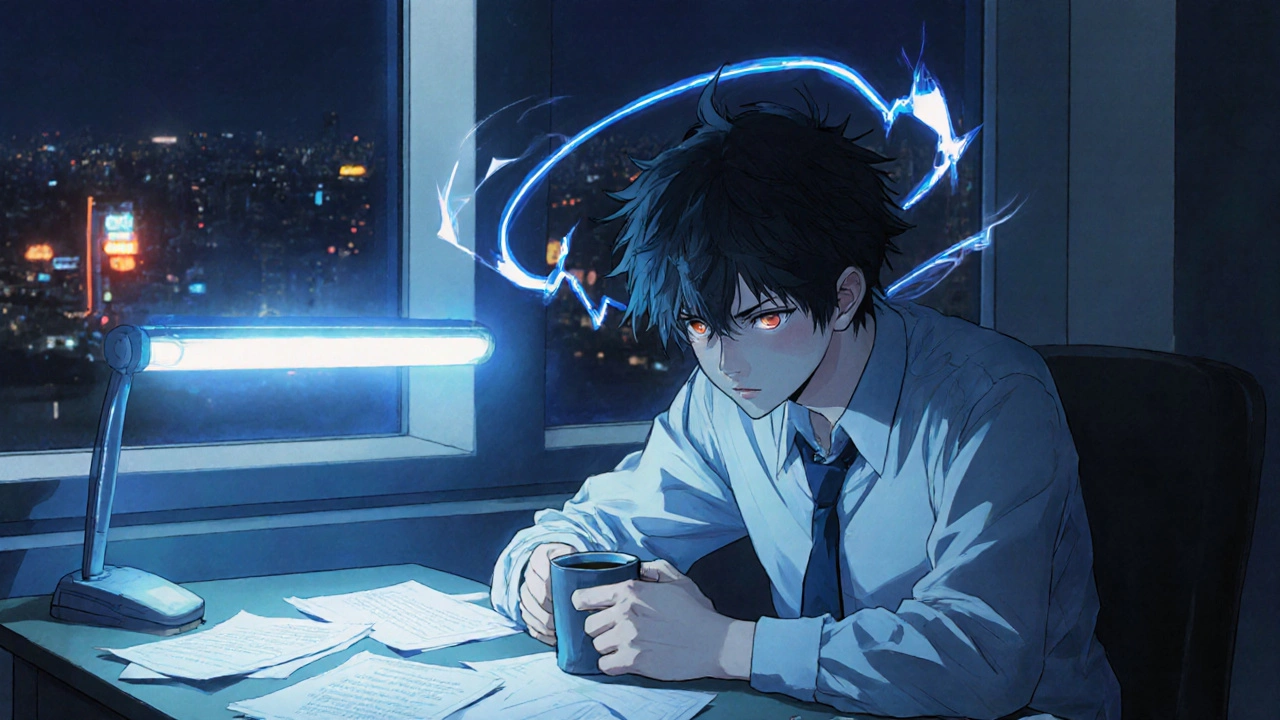
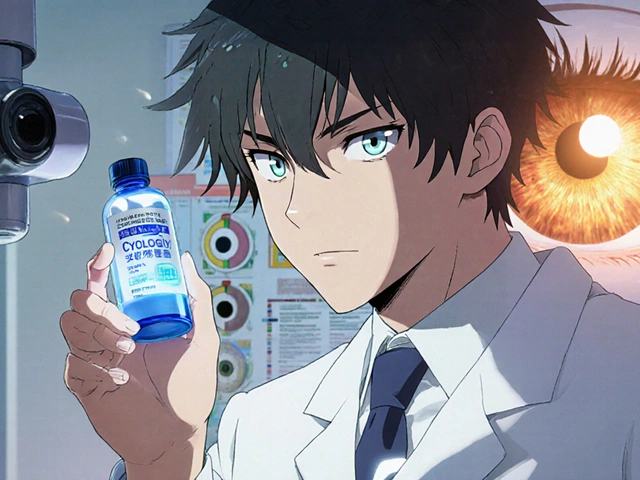


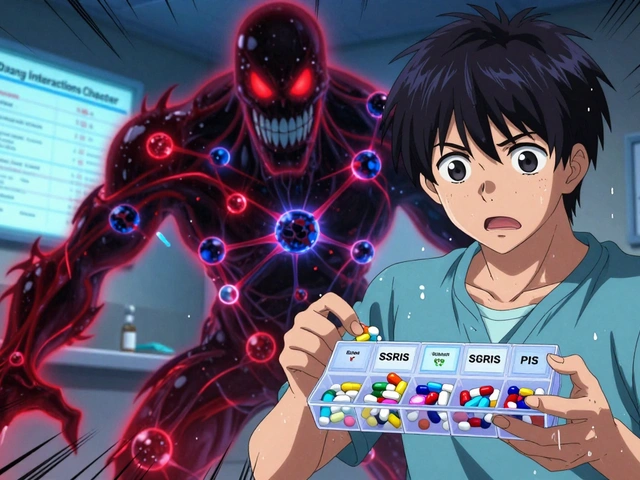


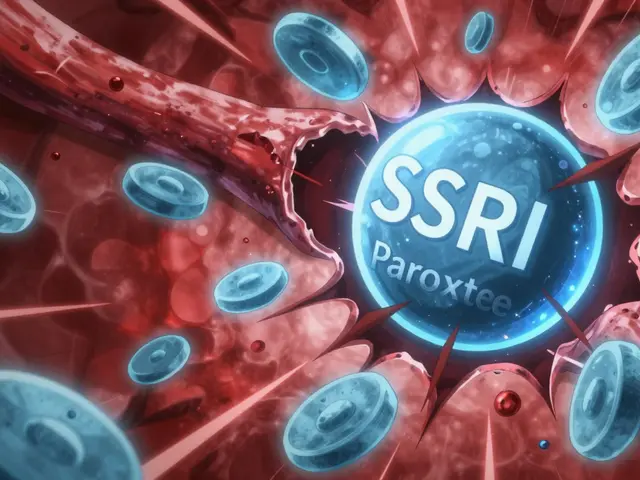
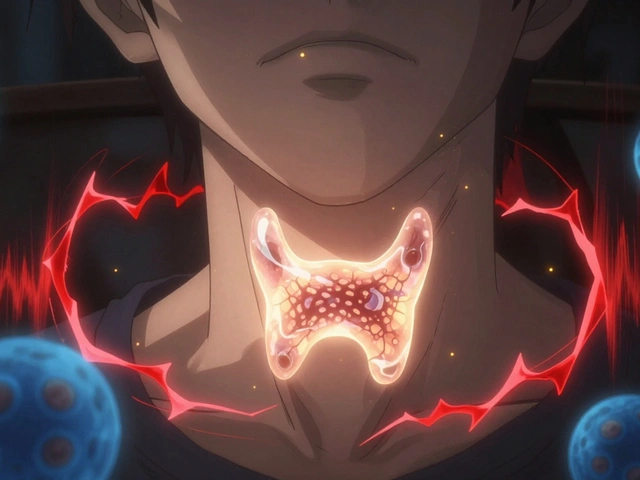
Shift work is a crucible for the American spirit; the clock may try to dictate us, but we rise with grit and determination.
Our nation built on hard work doesn’t need a excuse to complain about a few extra hours of darkness.
We just have to harness that same resolve to protect our mental health.
When the circadian clock is hijacked, the mind reels in a cascade of stress hormones that no one asked for.
It’s a silent revolt that ordinary folk rarely see, yet the consequences echo in anxiety and depression.
Understanding this mechanism is the first step toward reclaiming equilibrium.
The night shift feels like stepping onto a stage while the lights are forever dimmed, and the audience is the relentless tick of the internal clock.
I watch myself drift from one exhausted moment to the next, yearning for sunrise that never arrives.
It’s a drama played out in the shadows, but the script can be rewritten with intentional habits.
Just imagine the relief of a morning that finally feels like a warm embrace.
I remember when I first took a night shift at the warehouse and thought I could simply power through with coffee.
The lights buzzed like neon beacons, and I felt the weight of every unheard hour pressing on my skull.
Soon after, my mood swung like a pendulum, and I found myself snapping at my roommate for the tiniest noises.
What the manuals never tell you is that the body keeps a secret diary of cortisol spikes that you can't read but you can certainly feel.
I tried the orange glasses my friend suggested, only to discover that they made the sunrise look like a hostile glare.
My doctor, who seemed more interested in his lunch break, prescribed melatonin without asking about my diet, and the result was an unsteady wobble between drowsiness and agitation.
Meanwhile, the night crew kept swapping schedules like a deck of cards, never giving anyone a chance to reset their internal compass.
I started keeping a journal, noting the exact minute the lights went off, the temperature of the break room, and the number of times I felt an inexplicable dread.
Each entry read like a confession, and I realized I was unintentionally feeding my anxiety by obsessively tracking the very thing that tormented me.
I tried a 20‑minute power nap before the shift, but the alarms in my head kept counting down the seconds until I had to be alert again.
The diet advice sounded simple-protein snack, avoid caffeine after midnight-but my cravings for sugary drinks were a rebellion against the body's own chemistry.
Physical activity turned into a quick stroll to the vending machine, which, in hindsight, was less exercise and more a frantic sprint for a sugar rush.
Even when I forced myself to socialize on weekends, I felt like an impostor among friends who lived by daylight, as if I were speaking a different language of fatigue.
All those little adjustments-light therapy, consistent sleep windows, quiet rooms-felt like trying to patch a sinking ship with duct tape.
In the end, I accepted that shift work will always be a tug‑of‑war with my biology, and the best I can do is negotiate peace treaties rather than expect a total victory.
Start by treating your sleep window like a non‑negotiable appointment-write it on your calendar and protect it fiercely.
Even a 30‑minute wind‑down routine with dim lighting can signal your brain that it’s time to unwind.
Combine that with a short power nap before a night shift, and you’ll notice a measurable boost in alertness.
If you can, keep caffeine to the first half of your shift to avoid a crash later on.
Remember, consistency beats intensity when re‑training your circadian rhythm.
Shift work is a cosmic joke!!! It flips reality on its head!!!
Esteemed colleagues, the challenges presented by irregular work hours demand a proactive and disciplined approach.
Implementing structured light exposure, rigorous sleep hygiene, and regular physical activity will markedly enhance psychological resilience.
Let us commit to these evidence‑based practices to safeguard our mental well‑being.
What if the push for 24‑hour productivity is orchestrated by shadowy interests that profit from exhausted workers?
The data on shift‑work disorders conveniently appears after legislation passes, keeping the populace in a state of chronic fatigue.
Stay vigilant; the wellness programs might be a smokescreen.
Night shifts are just a rite of passage, not a mental health hazard.
I agree that consistent sleep habits and proper lighting can make a big difference.
Let’s share what works for us and keep each other motivated.